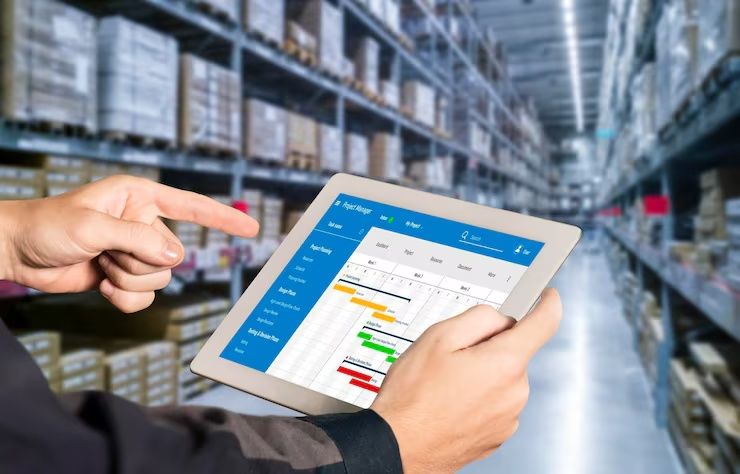Inventory software is designed to help organizations track, manage, and optimize their stock of goods, materials, or products. It has evolved from simple spreadsheets to sophisticated systems that integrate with accounting, sales, and supply chain operations.
Importance
Understanding inventory software is essential for several reasons:

-
Operational efficiency: It reduces manual work, automates repetitive tasks, and improves workflow accuracy.
-
Data-driven decisions: Software provides reports and analytics to guide purchasing, storage, and replenishment strategies.
-
Enhanced supply chain coordination: Integration with suppliers, warehouses, and distribution channels ensures smooth operations.
-
Business scalability: Companies expanding their operations benefit from systems that handle larger volumes and more complex inventory structures.
Inventory software impacts managers, operations teams, warehouse personnel, and executives who rely on accurate data to make strategic decisions.
Recent Updates
Several trends and developments in inventory software have emerged in 2023–2024:
-
Cloud-based solutions: Increased adoption of cloud systems allows remote access, real-time updates, and improved scalability.
-
AI and predictive analytics: Some platforms now use artificial intelligence to forecast demand, optimize stock levels, and reduce waste.
-
Integration with e-commerce: Inventory systems now often connect seamlessly with online marketplaces and point-of-sale systems for automatic updates.
-
Mobile accessibility: Mobile apps for inventory tracking, barcode scanning, and reporting have become more common.
-
Sustainability features: Tools that monitor resource usage and help reduce excess inventory support environmentally responsible operations.
These updates reflect the evolving needs of modern businesses, emphasizing automation, accessibility, and data intelligence.
Laws or Policies
Inventory management can be influenced by regulations depending on the industry and country:
-
Accounting standards: Compliance with financial reporting regulations ensures inventory is accurately represented in balance sheets.
-
Tax compliance: Accurate inventory records support correct reporting for inventory-related taxes or deductions.
-
Product safety regulations: Certain industries, like food or pharmaceuticals, must track stock in alignment with safety and expiration requirements.
-
Data protection policies: Systems must comply with laws governing storage and processing of personal or customer data.
-
Industry-specific regulations: Some sectors may require mandatory traceability of materials, batches, or components.
Adhering to these policies ensures operational transparency, regulatory compliance, and risk mitigation.
Tools and Resources
Several tools and resources can assist organizations in managing inventory effectively:
-
Inventory management software platforms: Cloud-based, on-premise, and hybrid options with varying levels of automation.
-
Barcode and RFID systems: Track items quickly and accurately in warehouses and stores.
-
Reporting and analytics tools: Dashboards and reports help visualize stock levels, trends, and turnover rates.
-
Mobile applications: Enable staff to update inventory, conduct audits, and scan products on the go.
-
Integration with ERP systems: Enhances overall business workflow by connecting inventory data with finance, sales, and logistics modules.
-
Training resources and guides: Tutorials, webinars, and courses help teams understand and use inventory software effectively.
Example Table: Key Inventory Software Features
| Feature | Purpose | Benefit |
|---|---|---|
| Real-time stock tracking | Monitor inventory across locations | Reduces errors and prevents stockouts |
| Automated reordering | Triggers replenishment when levels are low | Maintains optimal stock levels |
| Reporting and analytics | Generates insights on sales and inventory | Data-driven decision-making |
| Barcode/RFID integration | Tracks items efficiently | Speeds up warehouse operations |
| Multi-location support | Manages inventory across branches | Simplifies coordination and oversight |
This table provides a snapshot of common functionalities that support effective inventory management.
FAQs
What is inventory software?
Inventory software is a digital tool used to track, manage, and optimize stock levels, streamline operations, and provide insights into supply and demand.
Who can benefit from inventory software?
Retailers, manufacturers, e-commerce businesses, warehouses, and service providers that need to monitor products or materials.
Is cloud-based inventory software better than traditional systems?
Cloud systems provide real-time updates, remote access, scalability, and integration options that traditional systems may lack.
Can inventory software help with demand forecasting?
Yes, many systems use historical data and predictive analytics to anticipate stock requirements and optimize inventory.
Do businesses need technical knowledge to use inventory software?
Most modern platforms are user-friendly, often providing training, support, and intuitive interfaces to simplify adoption.
Conclusion
Inventory software is a critical tool for modern business operations, enabling organizations to manage stock efficiently, improve supply chain coordination, and make informed decisions.
With ongoing advancements in cloud computing, mobile access, AI, and integration with e-commerce and ERP systems, inventory management has become more intelligent, flexible, and data-driven.
By understanding the fundamentals, staying aware of industry trends, complying with regulatory requirements, and using the right tools, businesses can maintain accurate inventory, optimize operations, and support growth objectives effectively.